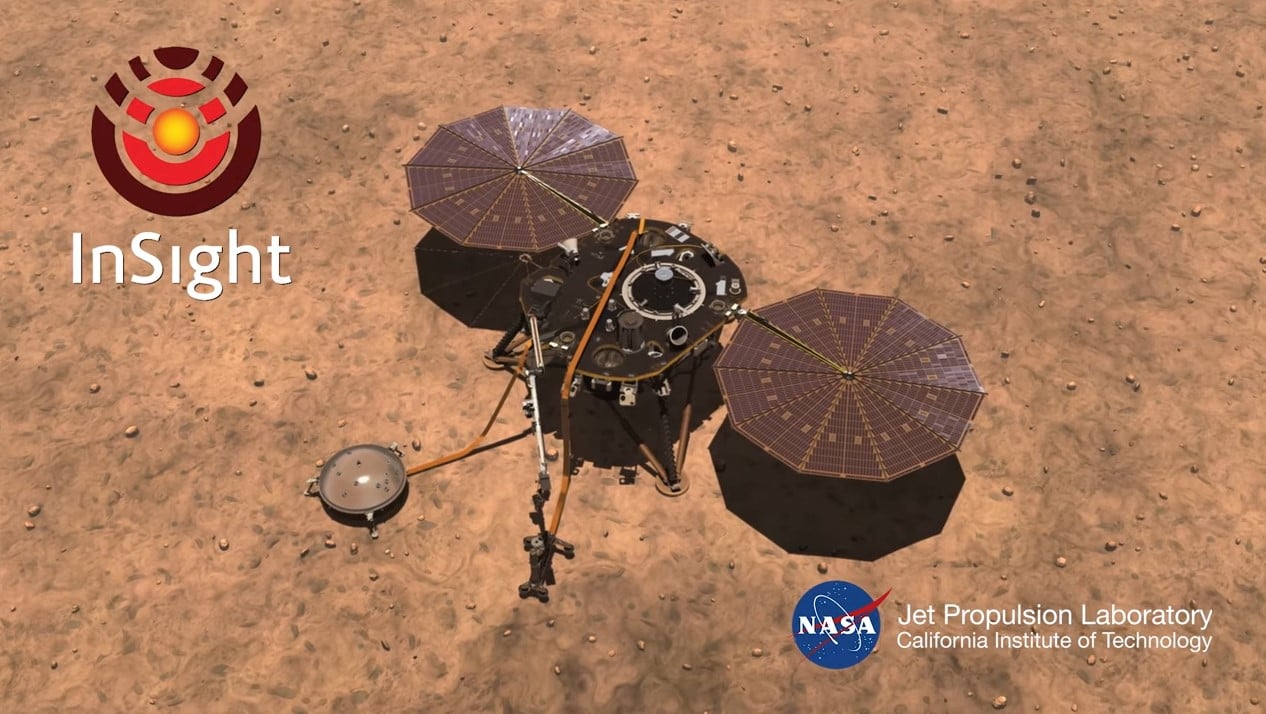NASA’s Mars InSight Mission is ready to launch. It has been six years since a spacecraft has landed on Mars. This spacecraft is going to research the planet’s geological structure and dig down for soil samples while also measuring “marsquakes” for the first time. The spacecraft is set to launch this weekend.
InSight stands for Interior Exploration using Seismic Investigations, Geodesy and Heat Transport. It is a stationary lander that will launch on May 5. NASA’s Mars InSight mission is the first ever that is going to dig into the ground of the Red Planet. It has a probe that will dig down 16 feet (5 meters). Furthermore, it’s the first mission with an attached seismometer that will be used on the soil of another planet since the Apollo moon missions.
“In some ways InSight is like a scientific time machine that will bring back information about the earliest stages of Mars’ formation four-and-a-half billion years ago,” JPL’s Bruce Banerdt, InSight’s principal investigator who has worked on this mission for more than 25 years said in a statement. “It will help us learn how rocky bodies form, including Earth, its moon and even planets in other solar systems.”
The mission is a part of a U.S.-European collaboration and cost $1 billion to achieve. Scientists working on the mission are hopeful about having a better understanding of how the red planet, and any rocky planet in particular, formed 4.5 billion years ago.
Since Mars is smaller and less active in geological terms than Earth, scientists can observe the red planet in its original shape with its “fingerprints” of early evolution, as Banerdt explained to the The Associated Press.
Together with NASA’s InSight mission, two briefcase-size satellites are going to launch aboard InSight. After the spacecraft lifts off, the satellites will break off and follow it for six months towards Mars. The satellites, however, are not going to stay on the red planet but just fly past. The satellites represent a test for potential communication between InSight and Earth after it arrives on Mars on Nov. 26.
The satellites are nicknamed WALL-E and EVE, inspired after the animated movie characters. They are equipped with the same type of propulsion that fire extinguishers use to shoot foam. In the movie from 2008, WALL-E used a fire extinguisher to move through space. NASA’s InSight mission is expected to launch from central California’s Vandenberg Air Force Base, on Saturday, early in the morning.
The InSight spacecraft will have the same type of parachute deployment and engine firing as the Phoenix lander had in 2008. It won’t have bouncy air bags like the Spirit and Opportunity rovers had in 2004.
To land on Mars with a spacecraft that is not much larger than a few office desks is “a hugely difficult task, and every time we do it, we’re on pins and needles,” Banerdt told the The Associated Press. The spacecraft will take seven minutes for entry, descent and landing.
“Hopefully, we won’t get any surprises on our landing day. But you never know,” NASA project manager Tom Hoffman said.
The spacecraft weighs 1,530 pounds and it uses a similar design as the Phoenix lander and before it, the Viking landers. All the landers have a three-leg landing design with no roaming around. In the past, missions associated with Mars were focused on the surface or areas close to the surface where the rovers searched for rocks and minerals. The Phoenix lander dug a few inches into the soil when searching for samples. Scientists also searched the Martian atmosphere and have studied the magnetic field over the past decades.
“But we have never probed sort of beneath the outermost skin of the planet,” said Banerdt.
The landing site for NASA’s Mars InSight mission called Elysium Planitia is a flat region on the equator of the planet with only a few big rocks that could potentially pose damage to the spacecraft. Banerdt calls it “the biggest parking lot on Mars.”
“Mars is still a pretty mysterious planet,” Banerdt said. “Even with all the studying that we’ve done, it could throw us a curveball.”
NASA’s Mars InSight mission is planned to launch on Saturday May 5, at 7:05 a.m. EDT (4:05 a.m. PDT) from Vandenberg Air Force Base in California on a ULA Atlas V rocket, according to NASA’s website. The news briefing as well as commentary regarding the launch will be streamed on NASA live.
On the same day, the International Space Station will release SpaceX’s CRS-14 Dragon cargo spacecraft that is going to return to Earth and splash down. The release of the spacecraft is scheduled at around 9:30 a.m. EDT.





